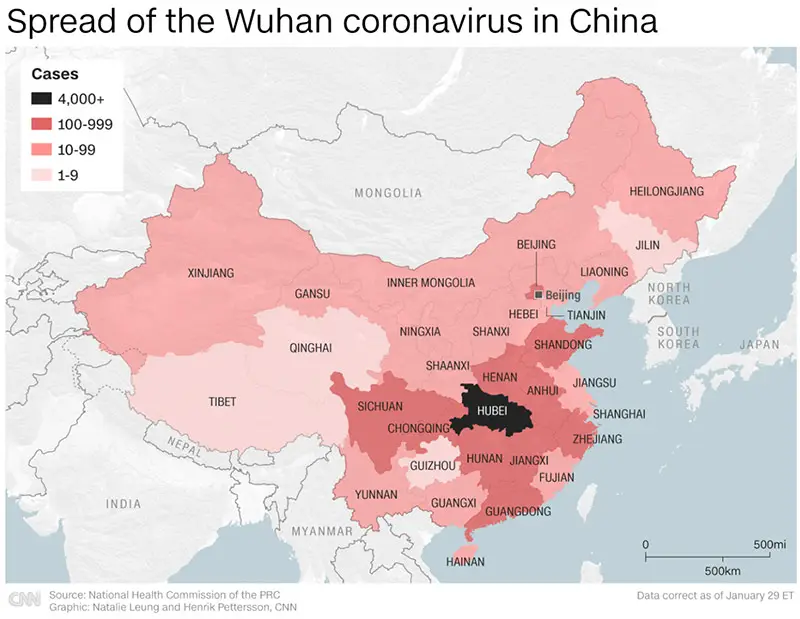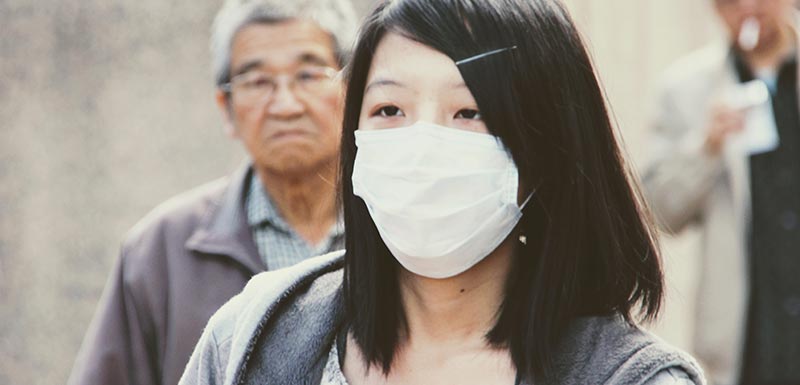The novel coronavirus (COVID-19) has spread all over China and multiple countries around the world.

The History
Last December, ophthalmologist Li Wenliang, based on an influx of sick patients at his office, warned fellow doctors in Wuhan, China, to take respiratory precautions. Four days later, local authorities accused him of “spreading false rumors,” punishable by imprisonment. He stopped spreading the word. Now he is dead, the healthcare system in Wuhan has collapsed, and the city is under martial law. President Xi Ping’s iron rule is threatened.
Chinese officials delayed reporting the epidemic, fearing loss of tourism during the Lunar New Year Celebration. The World Health Organization delayed its epidemic declaration as well, which gave the coronavirus time to spread to 28 countries.
The WHO delayed its epidemic declaration, giving the coronavirus time to spread Share on X
One can contain epidemics. On March 27, 1946, an American arrived in New York by bus from Mexico and died of smallpox several days later. Pharmaceutical firms produced vaccines around the clock, the military donated supplies, and the Red Cross, public health departments, and retired Air Wardens went door to door and 6 million New Yorkers were vaccinated in one month. This smallpox epidemic was stopped in its tracks. (See “Panic in the Streets” with Richard Widmark).
However, the Chinese view epidemics as political events, in which the problem is first denied, courageous health care workers and ordinary citizens die for a greater good, and, as the epidemic burns itself out, outsiders are blamed. The two most recent coronavirus epidemics (SARS and MEERS) affected less than 10,000 people. In both, China was less than first coming. Coronavirus is on a trajectory to infect over 100,000 people, and we don’t know where it ends. That’s the problem – coronavirus appears to be manageable, with all the Chinese prevarication, there is as much fear as fact.
Coronavirus is still spreading: It is all over China with travel restrictions on 750 million people. The US is doing well. There is no US foothold yet, but Americans who traveled in China have returned with the disease.
Conditions in China will get worse: Healthcare resources have been overwhelmed, and public health resources are exhausted. The real numbers of cases and deaths in China do not reflect the reality on the ground.
If you get sick, it is probably the flu: There are a handful of cases of coronavirus and no deaths in the US, while there have been 20 million cases of influenza and 10,000 deaths. Flu and coronavirus both present with fever and cough, but flu runs its course in roughly 48 hours, while coronavirus worsens steadily. Recommendations are evolving. If you have a flu-like illness, call your provider, hospital, or health department for advice. Stay home from the office or school where you might infect others.
Coronavirus isn’t going away: Like the flu, it has a natural reservoir in bats (which are too numerous to control), multiple ways to spread, and asymptomatic carriers. We should have a vaccine faster than any other time in history, but how many million immunizations to control this virus is unknown.
If you have a flu-like illness, stay home from work or school where you might infect others. Share on X
How to Stay Safe
Wash your hands: Coronaviruses spreads predominantly hand to hand, it can persist on dry surfaces for at least 24 hours, so cleaning with household cleaners is in order, and wiping down armrests in airplanes. As to your fellow passengers, the CDC says it would take an active coughing/sneezing passenger within 6 feet of your seat to put you at risk.
All this is tentative, because medical questions still remain to be answered and the country of origin has been less than transparent. The period of incubation, originally thought to be 14 days, is now targeted as 24 days. Based on this revised estimate, thousands of potentially infectious people were released early. The story isn’t over.

